Voice in the Hollow: Pushing Indie Horror and African Talent to the Next Level
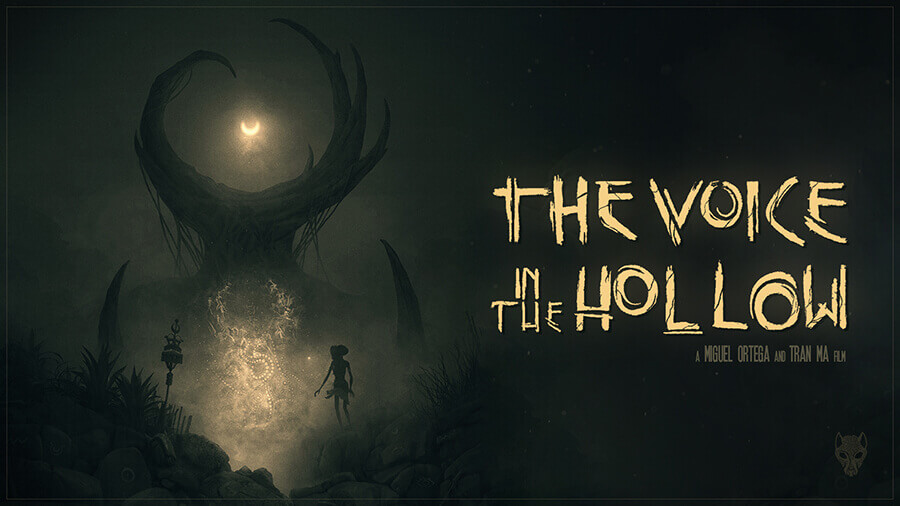
In imagining an animated version of the Cain and Abel fable, people would most likely think of an educational experience. Maybe even a more comical and watered-down interpretation of “the first murder”, or a modern inspired retelling. But, to imagine a stylised short with supernatural and horror elements set in an African tribe? That is a storytelling challenge that Studio M.T. took upon themselves to complete and deliver last December.
Created by studio Half M.T and produced by Gnomon, The Voice in the Hollow tells the story of Ala and Coa, two sisters from the tribe of “The Great Leopards”. The short follows their rivalry as they both try to gain their father’s respect by becoming hunters or “leopards”. In the face of failure and jealousy, Coa, the youngest of the two sisters, seeks power from an unnatural force in ‘the hollow’.
Miguel Ortega, 43, co-founder and the M in Half M.T Studios, worked as the director and VFX supervisor for The Voice in the Hollow, and although not his first directing role, this has become his first fully animated debut. The short, similar to his previous works like The Ningyio and The Green Ruby Pumpkin, follows on his fascination for the horror genre and a storytelling constructed to shock its audiences.
He said: “I really wanted to grab something that looked pretty, but make it with a story that is brutal, and that’s partially why we went with such pretty colours and such a stylized, happy look. It was a red herring, I knew that people were going to look at this and be like ‘Oh, this is going to be a story about two sisters that don’t like each other but at the end, they’re going to join forces’.
“That’s what I figure everyone is going to expect when they see the images of it. And then when they see how the movie ends, they’re like, “What the hell just happened”. And that was to me the most important part of the story.”
Every year, we see new filmmakers and storytellers seek to combine animation with unexplored and unexpected genres for mature audiences. 2022’s The House and the continuous run of Love, Death + Robots proving that animation and the macabre can achieve to appeal to a modern mature audience. However, there are only a few examples of this in a western mainstream scope. So, the continuous output of indie filmmakers to fill this hole has been capable of pushing this genre to its untapped potential.
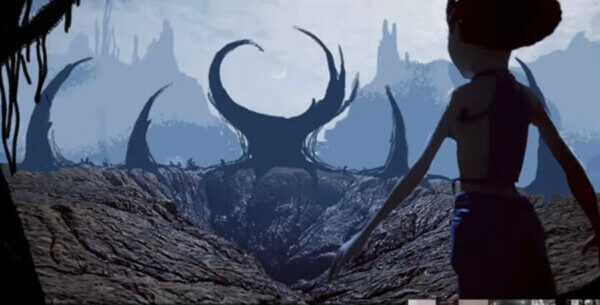
The Voice in the Hollow hopes to be one of the new works that fully embraces this unused genre and not hold back its punches. Either by its use of silent sounds that play with the audience’s ears, the use of visuals that balance themselves between showing enough blood to worry the audience yet not to disgust it, the raw and powerful voice acting, or its grim and shocking story ending.
The latter was Miguel’s most difficult task, as the finale saw itself changed and modified a few hours before the short’s premiere. Miguel said: “At the premiere, it was the first time we had shown it to an audience and there is ‘that’ scene at the end… I didn’t know how it was going to play with the crowd.
“When it happened I felt the air leave the room and everyone reacted exactly how I thought they would react. I remember thinking “Hell yeah, those changes were worth it just for that”. Everybody was just freaked out like, “What the hell just happened?” That was without a doubt, the happiest moment of making The Voice in the Hollow.”
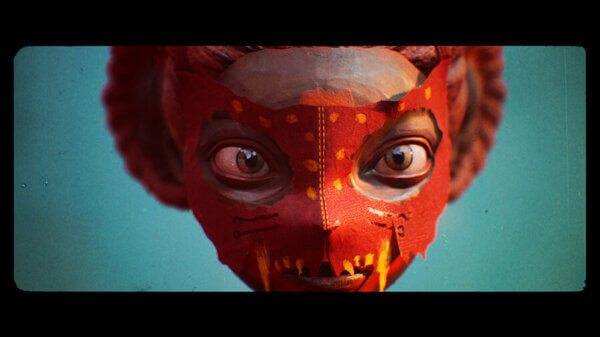
Half M.T Studio received the help and collaboration of a dozen Hollywood artists and animators, one of them was Chris Bostjanick. Chris, 43, is a senior VFX artist who has given his help in major blockbusters from Marvel’s Avengers to Terminator: Dark Fate.
In his experience, Chris has seen the different genres in which VFX can be used to support, and while the Voice in the Hollow is not his first for a bloody and mature project, he still believes that there is room to explore, he said: “I think horror in adult animation is very much an untapped outlet of content that has a lot of depth that can be explored. There is a huge fan base out there for it and really gives artists a lot to play with.”
Chris has collaborated with Miguel for a few years, and for the Voice in the Hollow, Chris lent a hand when animating and making the facial animations work with mocap. A feature, that while arduous, helped in setting the desired tones of desperation and fear work even with colourful backgrounds and almost magical ambiences.
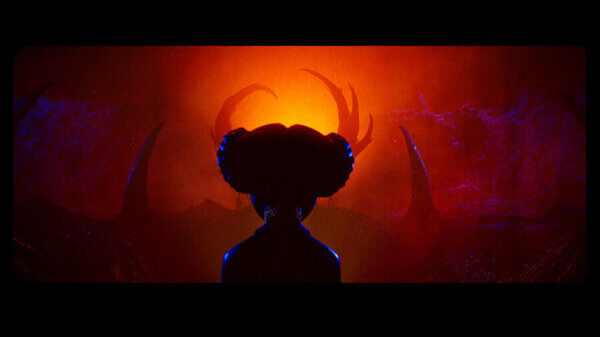
To comment on the facial animation, Chris said: “They needed them to be cute and endearing, even empathetic at times, but still have that stylization that fits the rest of the piece. We used a lot of stop motion references from films like Corline from Laika. Ultimately this is performance capture so the actors performance was just as important as the expressions we created. This was paramount for their final performances to come through on screen and add to the atmosphere the short was aimed at.”
In its performance, the Voice in the Hollow features the talent of actors and singers based and from Kenya and Tanzania. For the actors, this short became their first shot at being part of an animated production. While for the studio, these voices became ground for the authenticity of the short’s setting. An achievement which required the Half M.T. to work around the time zone of Africa and stay awake until almost sunrise to meet and advise the voice artists during recordings.
Rosalie Akinyi, 28, songwriter known as the singer ‘TheOnlyRosa’, gave her voice as the older sister in the fable, Ala. Coming from a background of music and only beginning a career in voice acting a year ago, this was Rosalie’s first and only role in animation.
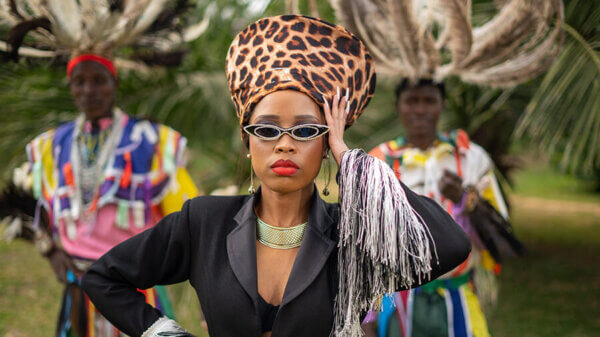
Rosalie Akinyi
She said: “I loved it. It pushed me to tap into emotions I normally wouldn’t express, for example, having to act like the mean big sister. It forced me to draw anger that I didn’t even have at the time and aim it at a non-existent Coa…
“My favourite part in the entire production has to be the dying scene because I really had to act as though I was taking my final breath, gasping for air and in pain. Even as a singer, in my own music videos or live performances, I’ve never acted out the moment of dying. That recording session made it feel real, like I was playing a character in an animation and telling her story in a way that was believable. It was no longer just an idea. It convinced me enough to know that it would convince our audience.”
All the voice actors were sought on by Miguel and the Half M.T. team, a hard task on itself as there were no available African agencies in Los Angeles. Or if they were, none were open to collaborate with the project. While that could have been a challenge and sometimes a dead end for studios hiring African talent, Half M.T. continued their rigorous search for “the right voice”, resulting in the project hiring foreign based actors. A risk that improved the production’s quality, deepened the short’s setting, and provided an opportunity that is not often available to African based talent.
Rosalie said: “I think we have an amazing array of artists here, but we don’t have opportunities to be on such projects. We just started picking up online freelance work so it’s slowly penetrating and if the Western media was open to it, they’d find an act for almost every project they have. I don’t know anyone who’s been on such a film before and hence I’m honoured to be able to encourage our local creators to keep an eye open for such projects.”
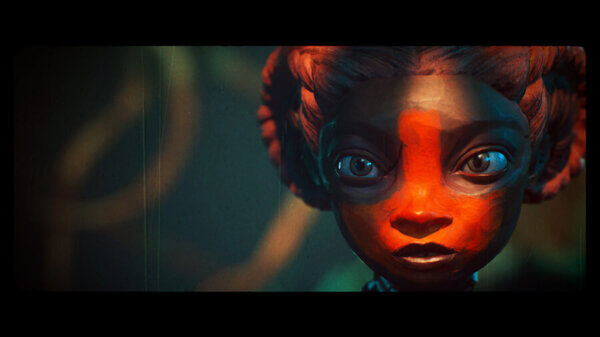
The short could have easily gone with a more Westernised approach and hired English speaking voice talent based in America. However, the decision to make the short as authentic as possible to African tribes, take creative liberties in the use of the Swahili as a more accessible language, made this short to be appreciated for its departure from previous Hollywood stereotypes.
She said: “The story’s ability to capture the fundamentals of African society like the togetherness of the family and the rites of passage is brilliant. As an African, I felt as though the story was about my people without too much fictional exaggeration which is what we see often.
“I would like to see more creativity in the portrayal of African culture. There’s an archaic view that most people hold of African history, for example speaking languages that cannot be understood if spoken now. The use of Swahili which is widely spoken in Africa made this film more relatable and that’s a simple factor to keep in mind.”
The Voice in the Hollow from the very beginning was made to shock its audiences with its horror, but in its sole year of production, it has also achieved to become the newest example of how animation can not only be pushed to tell unexpected and diverse stories but voice unheard foreign talent.

